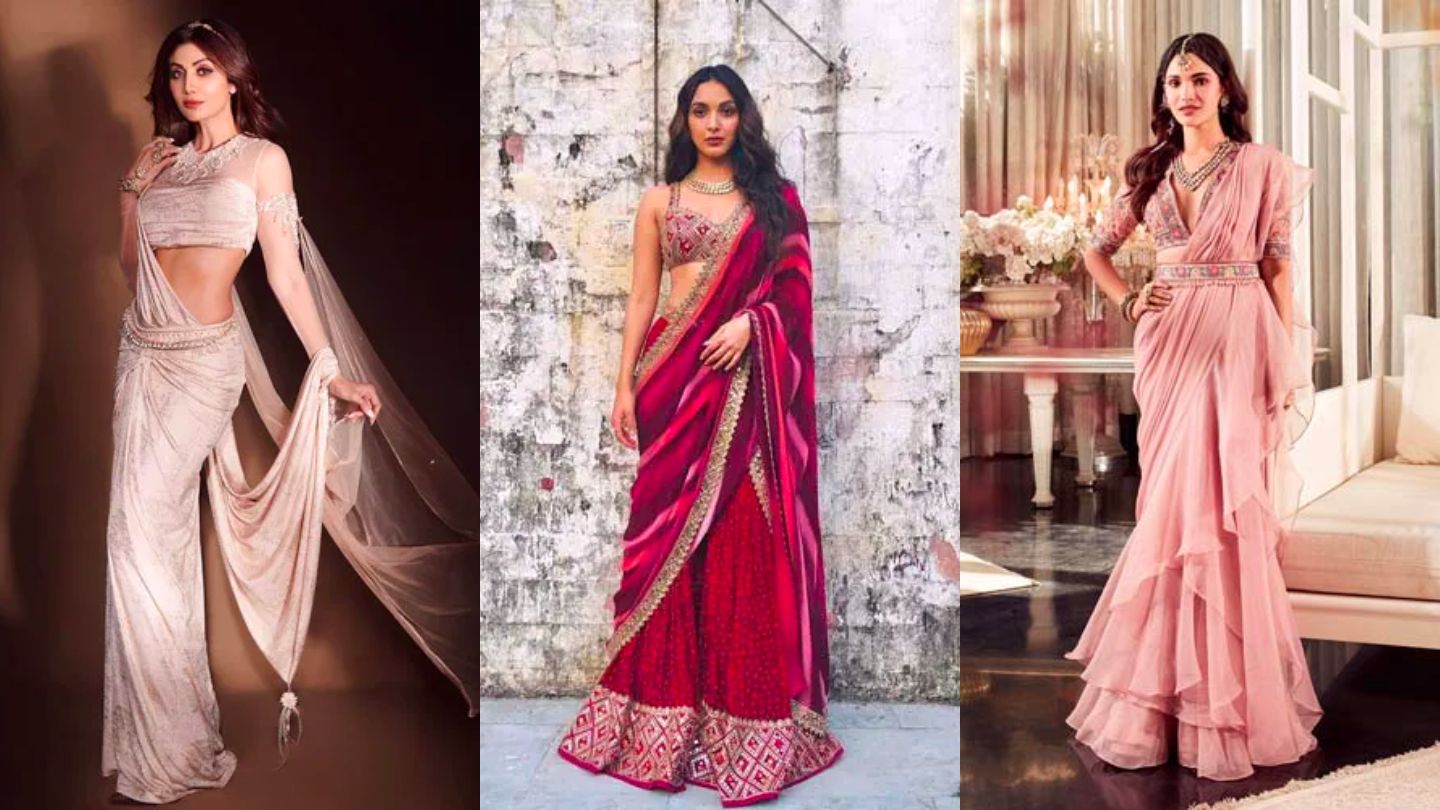Discover the mesmerising world of different styles of sarees. From traditional Kanjeevaram to contemporary designer sarees, explore the rich tapestry of Indian attire.
Saree, the epitome of grace and elegance, holds a special place in every Indian woman’s wardrobe. Across the diverse landscape of India, sarees manifest cultural richness and heritage. This article unfolds the myriad styles of sarees, each narrating a unique story of tradition, craftsmanship, and modernity.
Traditional Sarees
Kanjeevaram Sarees
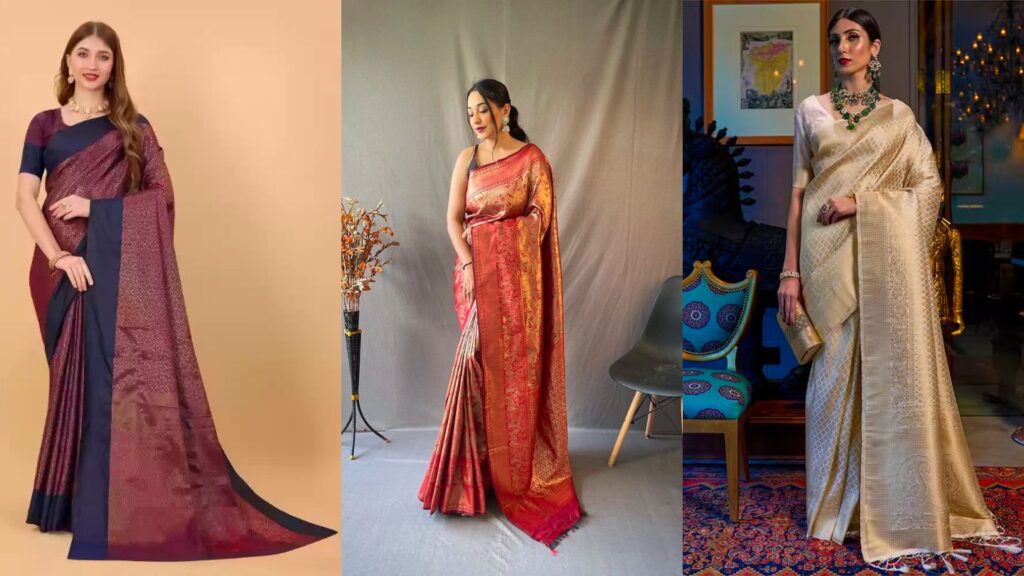
Kanjeevaram sarees, renowned for their opulent silk and intricate zari work, hail from Tamil Nadu. Adorned with temple motifs and vibrant borders, Kanjeevaram sarees epitomise South Indian splendour.
Banarasi Sarees
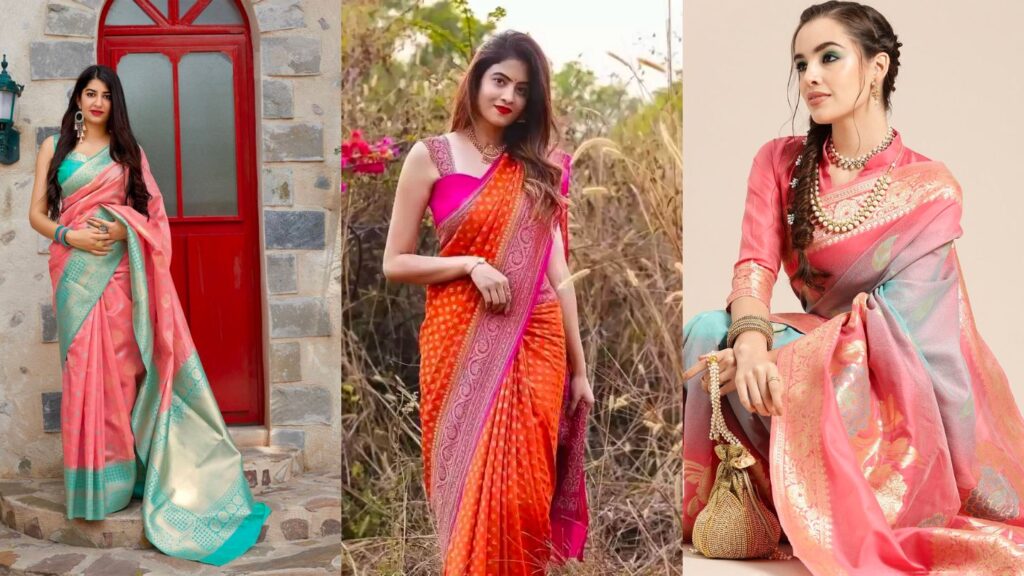
Originating from Varanasi, Banarasi sarees exude timeless charm with their luxurious silk fabric and ornate brocade work. These sarees, woven with gold and silver threads, are a symbol of North Indian heritage.
Chanderi Sarees
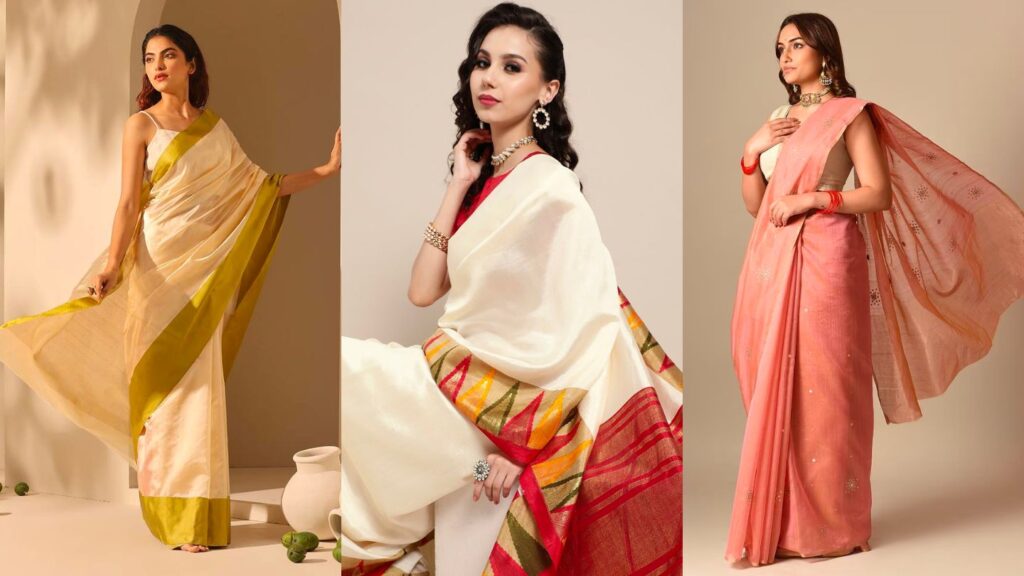
Crafted in Madhya Pradesh, Chanderi sarees boast delicate sheer texture and traditional motifs. Known for their lightweight fabric and subtle elegance, Chanderi sarees are perfect for formal occasions.
Regional Variations
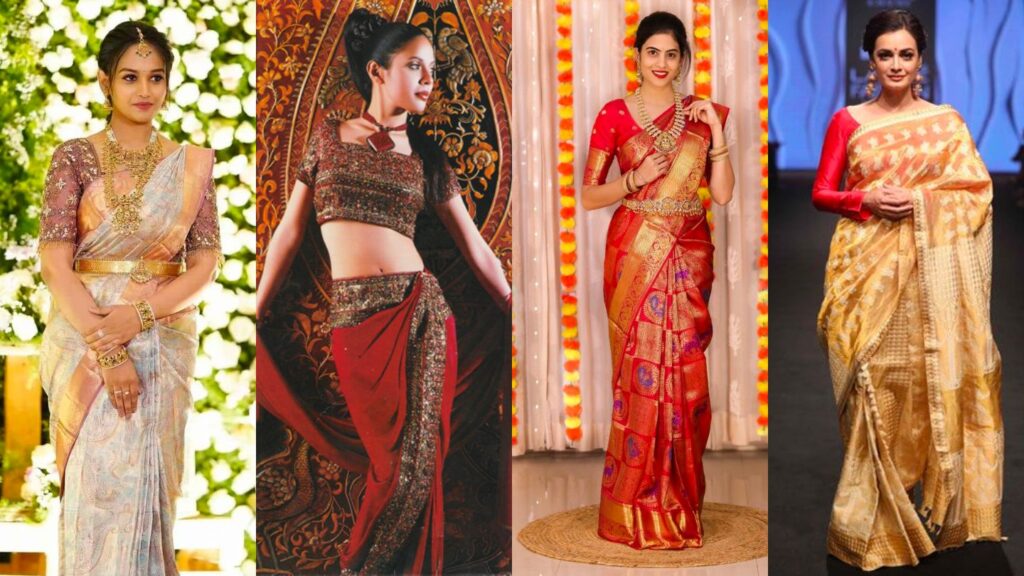
South Indian Sarees
Distinctive for their vibrant colours and intricate temple designs, South Indian sarees like Kanjeevaram and Mysore silk reflect the cultural ethos of the region.
North Indian Sarees
Banarasi, Chikankari, and Bandhani sarees from North India showcase exquisite craftsmanship and vibrant hues, reflecting the diverse cultural heritage of the region.
Contemporary Designs
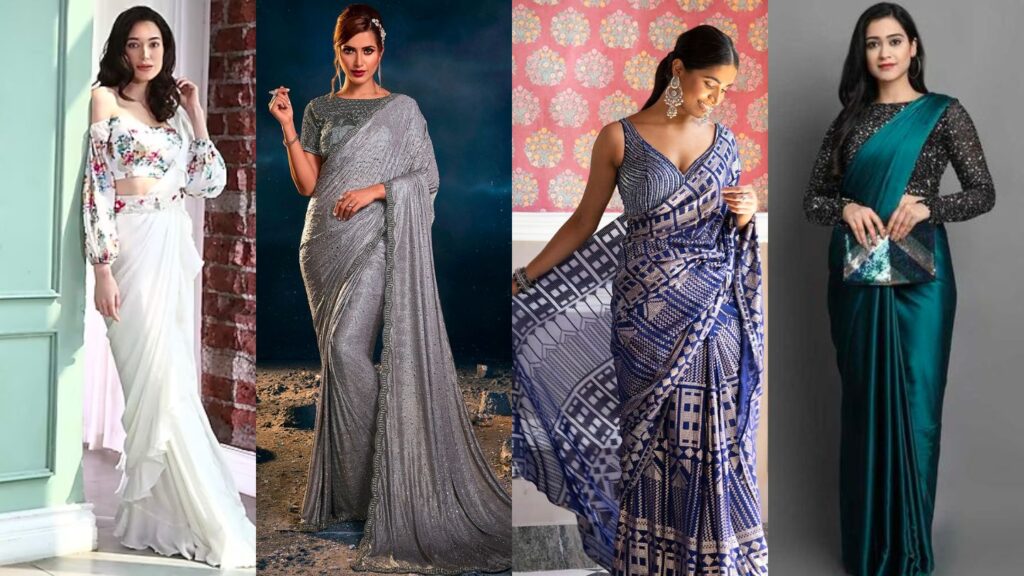
Designer Sarees
Fusing traditional aesthetics with contemporary trends, designer sarees offer a modern twist to ethnic attire. From intricate embellishments to unconventional drapes, designer sarees cater to the evolving fashion preferences of women.
Bollywood-inspired Sarees
ALSO READ : Introduction to Saree Styles for Parties
The styles of sarees worn by famous Bollywood actresses in films and public appearances have a major impact on saree fashion trends. These iconic outfits, as worn by Bollywood divas, serve as inspiration for fashion lovers around the world.
Fabric and Embellishments
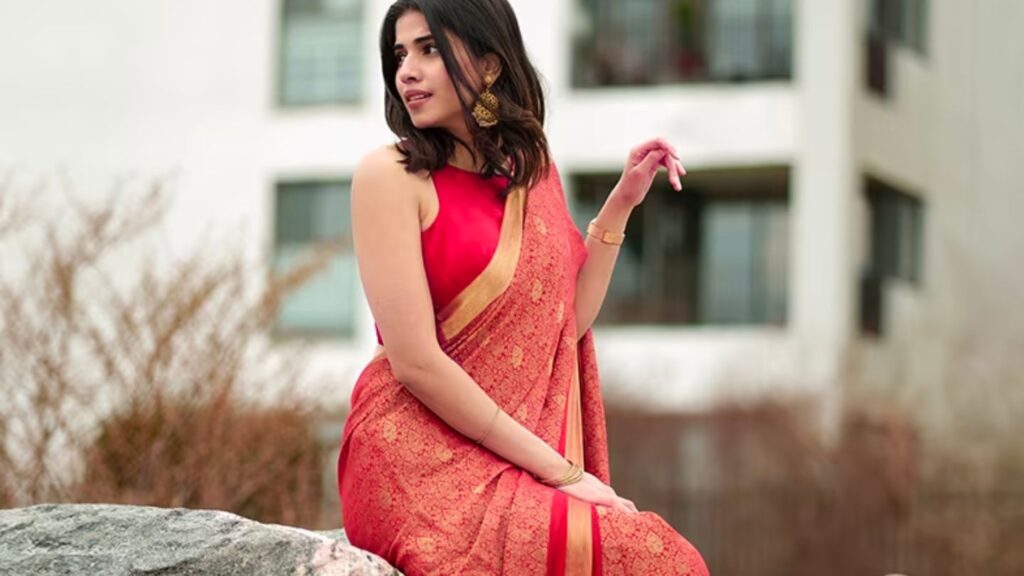
Silk Sarees
Silk sarees, available in various regional styles, symbolise luxury and elegance. From Kanjeevaram to Banarasi, silk sarees are prized for their rich texture and timeless appeal.
Cotton Sarees
Lightweight and breathable, cotton sarees are ideal for everyday wear. With intricate weaves and vibrant patterns, cotton sarees offer comfort without compromising on style.
Georgette Sarees
Georgette sarees, known for their fluid drape and contemporary appeal, are favoured for parties and special occasions. Embellished with sequins and embroidery, georgette sarees exude understated glamour.
Draping Styles
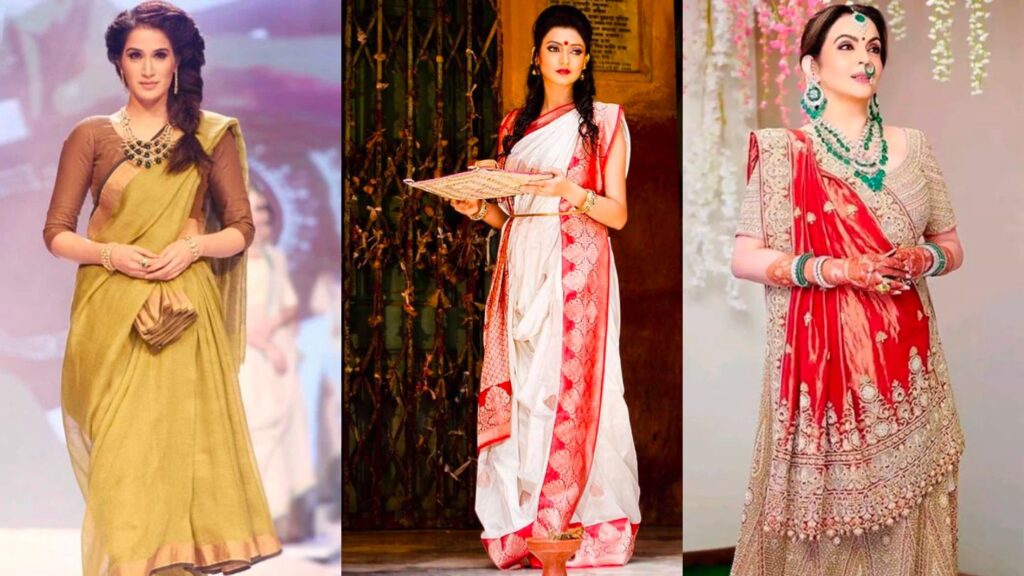
Nivi Style
The Nivi drape, originating from Andhra Pradesh, is the most popular saree draping style. It involves pleating the saree neatly and allowing the pallu to fall gracefully over the shoulder.
Bengali Style
The Bengali drape, characterised by pleats in the opposite direction and a key highlight of red and white sarees during Durga Puja, symbolises tradition and cultural pride.
Gujarati Style
The Gujarati drape, with its intricate pleats and pallu brought from the back to the front over the right shoulder, adds a touch of elegance to traditional Gujarati sarees like Bandhani.
Occasion-specific Sarees
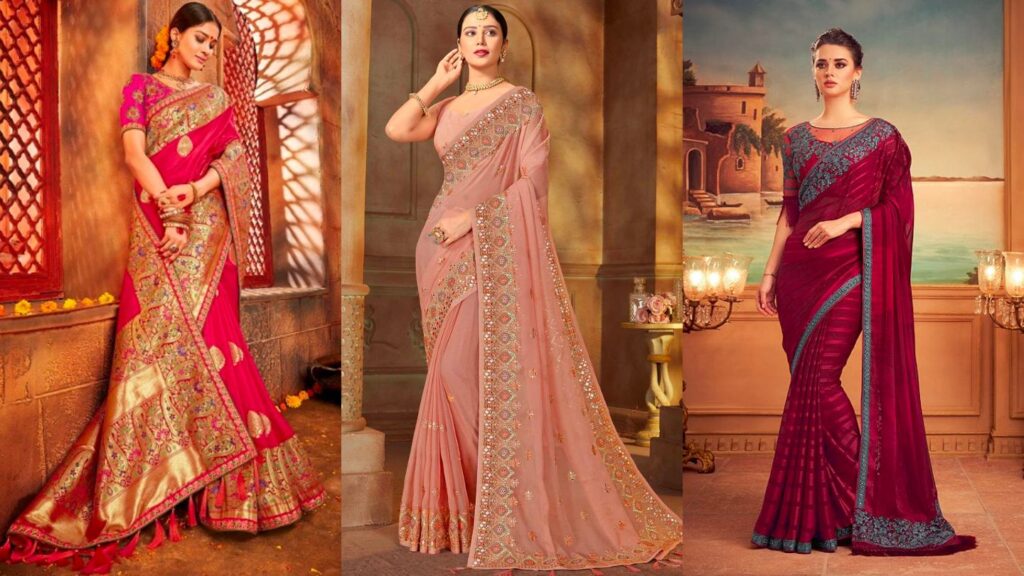
Wedding Sarees
Stunning wedding sarees, adorned with exquisite embroidery and sparkling embellishments, embody both the grandeur of tradition and the stories of love and heritage. Each masterpiece, from the vibrant silks of Kanjeevaram to the intricate weaves of Banarasi, tells a captivating tale of celebration and cultural roots.
Party Wear Sarees
ALSO READ : Saree Styles for Party: Elevate Your Look with Elegance and Grace
For glamorous events and festive celebrations, opt for party wear sarees. These sarees boast stylish modern designs and airy fabrics, making them comfortable and eye-catching. Their vibrant hues and contemporary cuts guarantee you’ll turn heads and make a lasting impression wherever you go.
Maintenance and Care
Washing Tips
To maintain the lustre of silk and prevent damage, hand wash silk sarees using mild detergent and cold water. Avoid wringing or twisting the fabric and dry them in shade to prevent color fading.
Storage Suggestions
Store sarees in a cool, dry place away from direct sunlight to prevent discoloration and mildew. Fold sarees neatly and avoid hanging them for extended periods to prevent stretching.
Saree Accessories
Blouses
Enhancing the allure of your saree, the blouse serves as its perfect companion, adding a touch of elegance and charm. Explore a myriad of styles, from classic silk renditions to chic crop tops, each designed to harmonise with your saree, flattering your figure with grace and sophistication.
Jewellery
Accessorise your saree with statement jewellery pieces like necklaces, earrings, and bangles. Opt for traditional Kundan or temple jewellery for a classic look or experiment with contemporary pieces for a modern twist.
How to Choose the Perfect Saree
Body Type Considerations
Select sarees that flatter your body type. Opt for lightweight fabrics like georgette for petite frames, while silk sarees accentuate curvier figures.
Color Combinations
Choose saree colours that complement your skin tone and occasion. Bright hues like red and gold are ideal for weddings, while pastel shades are perfect for daytime events.
Saree Styling Tips
Draping Techniques
Experiment with different saree draping styles to create unique looks for various occasions. From traditional Nivi drape to contemporary dhoti saree, explore diverse draping techniques to express your personal style.
Mixing and Matching
Enhance your saree style by blending diverse patterns, colors, and textures with complementary blouses and accessories. Embrace the art of mixing and matching to craft captivating ensembles that reflect your unique personality. Experiment with an array of hues and prints to breathe life into your saree ensemble.
In conclusion, the world of sarees is as diverse as it is enchanting. From timeless traditional weaves to contemporary designer creations, sarees continue to evolve while retaining their cultural significance. Embrace the elegance of sarees and celebrate the rich tapestry of Indian heritage with every drape.
FAQs
Are sarees only worn in India?
Sarees, which originated in India, are also embraced in other countries like Bangladesh, Sri Lanka, and Nepal. However, each country has its unique style and way of draping sarees.
How do I choose the right fabric for my saree?
Consider factors such as the occasion, climate, and personal preferences when selecting the fabric for your saree. Silk sarees are ideal for formal events, while cotton sarees are perfect for casual wear.
What is the significance of saree draping styles?
Different saree draping styles hold cultural and regional significance. For example, the Nivi drape is popular in South India, while the Gujarati drape is common in the western region.
Are sarees only worn on special occasions?
Sarees, a timeless attire, gracefully adorn women during festivals, weddings, and myriad special occasions, yet their versatility extends to daily wear, contingent upon the fabric intricacies and design aesthetics.

